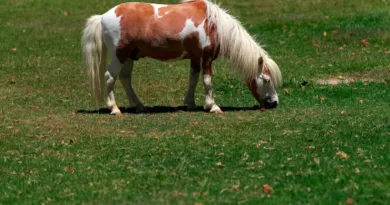What Are Horse Pellets Made Of
Understanding Horse Pellets: A Comprehensive Guide to Their Composition
Horse pellets have become a popular choice for horse owners as a convenient and efficient way to provide essential nutrients to their animals. These pellets are specially formulated to meet the nutritional needs of horses, ensuring they receive a balanced diet. The composition of horse pellets typically includes a combination of various ingredients, each playing a vital role in providing the necessary nutrients.
One of the primary components of horse pellets is fiber. Fiber is essential for horses as it aids in digestion and helps maintain a healthy gut. It provides a source of energy and helps regulate bowel movements. Most horse pellets contain a mixture of both soluble and insoluble fiber, ensuring that horses receive the benefits of both types. These fibers are typically derived from sources such as hay, grass, or other forage materials, which are processed and incorporated into the pellet form. With the inclusion of fiber, horse pellets help support the overall digestive health of horses, promoting proper nutrient absorption and optimal gut function.
The Role of Fiber in Horse Pellets
Fiber is an essential component of horse pellets, playing a vital role in maintaining the overall health and well-being of horses. This indigestible carbohydrate provides numerous benefits to the digestive system, helping to promote optimal gut function and prevent digestive issues. Furthermore, fiber aids in hindgut fermentation, which is crucial for the efficient utilization of nutrients and energy from the horse’s diet.
The inclusion of fiber in horse pellets helps to mimic the natural grazing behavior of horses, as they spend a significant amount of time foraging and consuming fibrous plant material. By providing an adequate amount of fiber in pellet form, horse owners can ensure that their horses receive the necessary roughage for proper digestion, even when grazing on pasture is limited. Additionally, fiber helps to regulate the passage of feed through the digestive tract, allowing for a more balanced and consistent feed intake.
Unraveling the Ingredients That Make Up Horse Pellets
When it comes to unraveling the ingredients that make up horse pellets, it is important to understand the various components that contribute to their composition. Typically, horse pellets are made from a blend of high-quality forages, grains, and fiber sources. These components are carefully selected to provide horses with a well-balanced diet that meets their nutritional needs.
The main ingredient in horse pellets is forage, which is typically sourced from alfalfa, timothy hay, or a combination of both. Forage is an essential part of a horse’s diet as it provides necessary roughage and fiber. It aids in digestion, promotes healthy gut function, and helps maintain optimal weight. Additionally, grains such as corn, oats, and barley are often included in horse pellets to provide energy and essential nutrients. These grains are rich in carbohydrates and are easily digestible by horses. As for fiber sources, beet pulp and soy hulls are commonly used to enhance the pellet’s texture and improve digestibility. By carefully selecting and incorporating these ingredients, horse pellets are formulated to support the overall health and well-being of horses.
Examining the Nutritional Value of Horse Pellets
Horse pellets are a popular choice among horse owners due to their convenience and nutritional value. When examining the nutritional content of horse pellets, it is important to consider the essential nutrients that these pellets provide. Horse pellets typically contain a balanced combination of proteins, carbohydrates, fats, vitamins, and minerals that are necessary for the overall health and wellbeing of horses.
Proteins are a crucial component of horse pellets as they help support muscle development and repair. These pellets often include high-quality protein sources such as soybean meal, alfalfa, or fish meal. Carbohydrates in the form of grains or forage provide horses with the necessary energy to perform daily activities and maintain a healthy weight. Additionally, fats in horse pellets serve as a concentrated source of energy and aid in the absorption of fat-soluble vitamins. The inclusion of vitamins and minerals ensures that horses receive a well-rounded diet, promoting strong bones, a healthy immune system, and overall vitality. By examining the nutritional value of horse pellets, horse owners can make informed decisions about their horse’s diet, ensuring they receive the necessary nutrients for optimal growth and performance.
The Importance of Protein Sources in Horse Pellets
Protein is an essential nutrient for horses, playing a vital role in their overall health and well-being. When it comes to horse pellets, the importance of high-quality protein sources cannot be overstated. The protein in horse pellets helps support various functions in the horse’s body, including muscle development, tissue repair, and immune function.
When selecting horse pellets, it is crucial to consider the protein sources used in their formulation. Ideally, the protein should come from high-quality sources such as soybean meal, alfalfa meal, or fish meal. These protein sources provide a balanced amino acid profile, ensuring that the horse receives the necessary building blocks for optimal health. Additionally, the protein content in horse pellets should be sufficient to meet the horse’s daily requirements based on its age, weight, activity level, and overall nutritional needs. By providing a reliable source of high-quality protein, horse pellets can contribute to the horse’s overall performance and vitality.
The Role of Grains and Forage in Horse Pellet Production
Grains and forage play a crucial role in the production of horse pellets, providing essential nutrients and energy to the equine diet. Grains, such as corn, oats, barley, and wheat, are often incorporated into horse pellet formulations. These grains are a significant source of carbohydrates, which supply energy for the horse’s daily activities and bodily functions. They also contain vitamins, minerals, and essential fatty acids that contribute to overall equine health.
In addition to grains, forage is another vital component in horse pellet production. Forage refers to the fibrous plant material that forms a significant part of a horse’s diet. Common types of forage used in horse pellets include alfalfa, timothy hay, and grasses. Forage provides necessary fiber, which aids in digestion and promotes a healthy gastrointestinal system. It also adds bulk to the pellets, allowing for proper chewing and reducing the risk of digestive disorders. The combination of grains and forage in horse pellet production ensures a well-balanced and nutritionally complete feed for horses.
Exploring the Additives and Supplements Found in Horse Pellets
Exploring the Additives and Supplements Found in Horse Pellets:
Additives and supplements are a common inclusion in horse pellets, aimed at enhancing the nutritional value of the feed. One key additive often found in horse pellets is vitamin E. This powerful antioxidant plays a vital role in supporting the horse’s immune system and promoting overall health. Additionally, omega-3 fatty acids are often added to support joint health and improve coat condition. These additives provide crucial nutritional support to ensure that horses receive a well-balanced diet.
Furthermore, supplements such as probiotics can also be found in horse pellets. Probiotics are beneficial bacteria that help maintain a healthy balance in the horse’s gut microbiome. By supporting digestion and aiding nutrient absorption, these supplements contribute to the overall well-being of the horse. Another common supplement is biotin, which is known for its positive effects on hoof health and growth. These additives and supplements are carefully formulated to meet specific dietary requirements and promote optimal health in horses.
Understanding the Manufacturing Process of Horse Pellets
The manufacturing process of horse pellets involves several steps to ensure a high-quality end product. It begins with the selection of raw materials, which typically include a combination of grains, forage, fiber sources, and protein concentrates. These ingredients are carefully sourced and undergo rigorous quality checks to ensure that they meet the required standards.
Once the raw materials are collected, they are then processed through a series of steps. These steps may involve grinding, mixing, and extrusion, depending on the specific manufacturing process. Grinding helps to break down the ingredients into smaller particles, while mixing ensures a uniform distribution of nutrients. Extrusion is a crucial step in pellet production, as it involves subjecting the mixture to heat and pressure, which helps to form the compact pellets that horses can easily digest. Once the pellets are formed, they are cooled and then packaged for distribution.
Considering the Quality Control Measures for Horse Pellets
When it comes to the production of horse pellets, quality control measures play a crucial role in ensuring the safety and nutritional value of the final product. These measures are designed to guarantee that horse owners can trust the pellets they are feeding their equine companions. One of the key quality control steps is the rigorous testing of raw materials before they are used in pellet production. This involves analyzing the ingredients for their nutritional content and ensuring that they meet the standards set by regulatory bodies.
In addition to testing the raw materials, quality control measures also focus on monitoring the entire manufacturing process. This includes regular inspections and checks at various stages, from blending and mixing the ingredients to the final packaging of the pellets. By doing so, horse pellet manufacturers can identify any potential issues or deviations from the desired quality standards. These measures are in place to safeguard the health and well-being of horses, as well as to maintain the reputation and credibility of the company producing the pellets.
Evaluating the Different Types and Varieties of Horse Pellets Available
When it comes to evaluating the different types and varieties of horse pellets available, there are several factors to consider. First and foremost, it is important to assess the nutritional content of the pellets. Different horses have different dietary needs, and it is crucial to choose a pellet that meets these requirements. Look for pellets that contain a balance of essential nutrients such as carbohydrates, protein, vitamins, and minerals.
Another aspect to consider when evaluating horse pellets is the source of the ingredients. Ideally, the pellets should be made from high-quality ingredients that are sourced from reliable suppliers. The integrity of the ingredients directly affects the nutritional value and overall quality of the pellets. Additionally, some horse owners may have specific preferences or restrictions when it comes to certain ingredients, such as grains or additives. Therefore, it is important to carefully read the ingredient list and understand the implications of each component.
What are horse pellets?
Horse pellets are a type of processed feed that is designed to provide balanced nutrition for horses. They are typically made from a mixture of grains, forage, and other ingredients.
What is the role of fiber in horse pellets?
Fiber is an essential component of horse pellets as it helps promote healthy digestion and provides energy. It also aids in maintaining a healthy weight and can prevent digestive issues such as colic.
What ingredients are commonly found in horse pellets?
Horse pellets can contain a variety of ingredients, including grains like oats and corn, forage such as hay or alfalfa, and additional supplements like vitamins and minerals.
How do I evaluate the nutritional value of horse pellets?
To evaluate the nutritional value of horse pellets, you should consider the levels of protein, fiber, fat, vitamins, and minerals they contain. Look for a balanced formulation that meets your horse’s specific dietary needs.
Why is the protein source important in horse pellets?
Protein is essential for muscle development, tissue repair, and overall growth in horses. The quality and source of protein in horse pellets can greatly impact their nutritional value.
What is the role of grains and forage in horse pellet production?
Grains provide carbohydrates and energy, while forage like hay or alfalfa adds fiber and natural nutrients to the pellets. The combination of grains and forage helps create a well-rounded and balanced feed for horses.
What additives and supplements are commonly found in horse pellets?
Horse pellets may contain additives and supplements such as vitamins, minerals, probiotics, and omega fatty acids. These additions aim to enhance the nutritional value and overall health benefits of the feed.
How are horse pellets manufactured?
Horse pellets are typically made through a process called extrusion. This involves blending the ingredients, heating, and then extruding the mixture through a die to create small pellet shapes.
What quality control measures should I consider when choosing horse pellets?
Look for horse pellet brands that have a good reputation for quality control. This includes measures such as testing for contaminants, ensuring accurate labeling, and following industry standards for manufacturing.
What are the different types and varieties of horse pellets available?
Horse pellets come in a variety of types and formulations. Some may be designed for specific age groups, activity levels, or dietary needs. It’s important to choose a type that suits your horse’s individual requirements.




